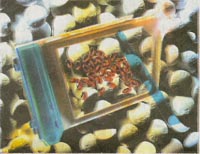Drug packaging may not be illegal or in violation of regulations. The State Drug Administration has issued the "Pharmaceutical Packaging, Labeling Regulations (Interim)". This provisional specification provides many new regulations for the packaging and labeling of pharmaceuticals. According to the provisional regulations, drugs The contents printed on the packaging and labeling are correct and accurate for the product. Except for the words describing safe and rational drug use, the words and logos of various improperly promoted products may not be printed, such as “national new drugs†and “Chinese medicine protection varietiesâ€. "," "GMP certification", "public expense reimbursement", "modern science and technology", "expensive medicinal materials" and so on. The same type of the same company, the same specifications of the drug (refers to the drug specifications and packaging specifications), the format and color of the packaging, labels must be the same, may not use different trademarks. If there are different specifications for the same product of the same company, the package and label of the minimum sales unit should be significantly different or clearly marked in the specification item. For drugs that have been approved to be produced in different places, their packaging and labeling shall also indicate the name of the company entrusted to the company and the place of processing. The texts used in the packaging, labelling, and labelling of pharmaceuticals sold and used in China shall be mainly in Chinese and shall be published by the National Language and Writing Committee. The current specification text. National medicines can increase their ethnic characters. Enterprises can use bar codes and foreign language controls on their pharmaceutical packaging as needed. Products that are patented in China can also be marked with a patent mark and a patent number, and indicate the type of patent license. In addition to the implementation of the provisions of the Regulations, the packaging and labelling of imported drugs should also be marked with the “Imported Drug Registration No.†or “Pharmaceutical Product Registration No.†and the name of the manufacturer; the packaging and labeling of imported subpackaged drugs should be marked Production area or area company name, production date, batch number, valid and domestic packaging company name, etc.
The State Drug Administration announced to the media at the end of last year that since the founding of New China, the first time China’s drug regulatory authority has completely cleared and standardized drug packaging, labels, instructions, and drug approval numbers has been basically completed. During the clean-up period, it was found that the pharmaceutical manufacturing company arbitrarily changed the contents of the manual, and the situation of unauthorized indications or indications was clearly expanded. The Bureau of Food and Drug Administration specifically requested that the company could only print the manual in accordance with the words approved by the relevant department. The clean-up and standardization work lasted more than two years and involved all domestically-produced drugs and domestic drug-producing companies' drugs approved at different times. According to reports, problems such as the confusion of drug packaging, labels and instructions, and the inconsistent drug approval numbers have directly affected the safety of clinical drug use. For example, some companies use pharmaceutical product names to exaggerate the efficacy of drugs and even mislead consumers. Some arbitrarily changed the content of the manual and added the individuation function without authorization to reduce the content of adverse reactions. The contents of the manual were inconsistent with the same drug produced by different manufacturers. Some have unhealthy or misleading consumer designs and ingredients on the label. Many NPC and CPPCC motions and proposals require that they be rectified and standardized as soon as possible. Of the 133,758 drug product specifications in the country, 113,279 have been approved for drug approval, 12,479 have been further verified, 5,472 have been revoked, and specifications for 2004 chemicals have been standardized. This will further rectify drugs. The market order and the strengthening of drug supervision and management laid a good foundation.

![<?echo $_SERVER['SERVER_NAME'];?>](/template/twentyseventeen/skin/images/header.jpg)